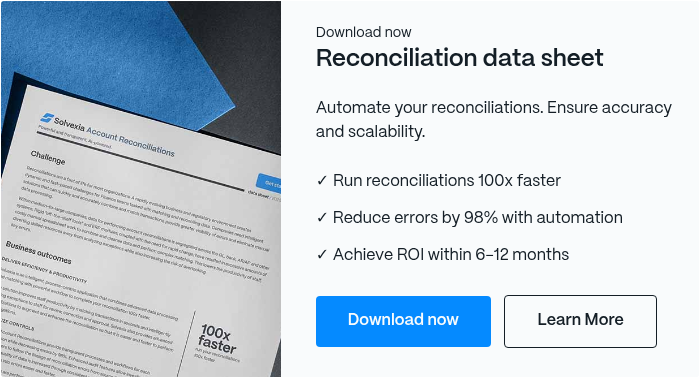What is Billing Reconciliation? Invoice Reconciliation Tips

Your business works hard for its revenue. Upon billing, the practice of billing reconciliation ensures that you are actually earning what you deserve to bring in as income. What is billing reconciliation? Ideally, invoicing should be a seamless and straightforward process. However, there are often delays, errors, and irregularities that occur (as you likely know from experience).
We’re going to share the steps of the billing reconciliation process, take a look at how invoice reconciliation software can help and share methods of reconciliation to achieve accuracy.
Coming Up
1. What is an Invoice Reconciliation?
2. What is the Difference Between Invoicing and Reconciliation?
3. Why is Invoice Reconciliation Important?
4. How Do You Reconcile an Invoice?
5. What are the Challenges of Invoice Reconciliation?
6. What is Manual vs Automated Invoice Reconciliation?
7. How to Improve Invoice Reconciliation?
What is an Invoice Reconciliation?
Billing reconciliation is the accounting process of comparing two or more sets of records to make sure that they are in alignment. When it comes to billing reconciliation, it’s common to compare bank statements with invoices to make sure that the payments received are timely and right.
There are a few scenarios that may arise, which make it of great value to perform billing reconciliation.
Some of these include:
- Misplaced invoices
- Duplicate invoices
- Early payment discounts applied
- An incomplete payment
- Delayed product delivery that causes a payment delay
- Timing differences between payments and deposits
- Bank fees or international currency fees
What is the Difference Between Invoicing and Reconciliation?
Invoicing and billing reconciliation shouldn’t be confused. Invoicing is the primary step in which you curate a detailed bill for your customer or client. Invoices consist of products and/or services that were sold. They include the price of the service, as well as any tax charges, if applicable and terms and conditions.
Reconciliation is the process that happens after invoicing in which you compare records to make sure that the accounts are accurately reflected. This way, you ensure that what you invoice gets paid.
Why is Invoice Reconciliation Important?
Invoice reconciliation is recommended to be performed on a regular basis. The two main reasons why it’s so important is to:
1. Spot Fraud
It’s a shocking truth, but businesses lose billions of dollars annually from fraudulent activity on behalf of their employees. With an organised system to review what money flows in and out of your business, you’d be more likely to recognise if anyone was stealing from your bank accounts.
2. Deal with Timing Issues
Deposits made into your bank account don’t always show up immediately. Additionally, on the other end, vendors may not cash the checks you provide immediately. Thus, you may have miscalculated the amount of money you actually have. Billing reconciliation helps you to be aware of these timing differences so you have an accurate reflection of your financial standing.
How Do You Reconcile an Invoice?
The methods of reconciliation depend on your resources and desires. Invoice reconciliation is a great way to avoid fraud and make sure that your records are up-to-date, but you wouldn’t want to waste too much time digging into the data. For that reason, you can utilise invoice reconciliation software and automation tools like Solvexia to streamline the process.
Here’s how you can reconcile invoices effectively:
1. Software Solutions
For billing reconciliation, you need access to your data, whether it be invoicing and accounting software, bank statements, point of sale systems and the like.
With data automation solutions like Solvexia, you can centralise all data and automate the process of collecting the necessary data. Then, the software can match the payments for you and review open invoices to check for payment. If something is missing, your team will be alerted and able to understand what’s going on.
2. Establish a Process
With automation solutions, you can create a workflow that works for your team. It also makes it easy to standardise the process and/or adjust it as needed.
With your process, you’ll want to remain organised and separate invoices by month so you can run reports to review outstanding payments. Be sure to establish a process for naming, sorting or numbering invoices so they are easy to reference.
3. Use a Checklist
Another useful billing reconciliation hack is to create a checklist. Your checklist helps you to review:
- Bank or financial institution charges
- Supplier charges
- Overdue balances
- Rolled over amounts
- Discounts on early payments
What are the Challenges of Invoice Reconciliation?
Billing reconciliation can be made simple and direct, especially when you leverage an automation solution to execute the time-consuming aspects of the process for you. If instead you perform billing reconciliation manually, you’ll likely run into the following challenges:
1. Many Sources of Payment
Clients tend to pay through different methods, including direct deposits, paper checks, accounting software, or credit cards. Additionally, with countless payment providers like PayPal, Worldplay, Amazon, Stripe, and more, the challenges of invoice reconciliation are only growing.
Unfortunately, it’s not always possible to standardise payment sources because each client has their own preference. But, with automation, you can centralise payment information and the payment reconciliation process.
2. Manual Processes Create Errors
Manual processes by way of spreadsheets are prone to errors. While the errors inevitably exist, they often go unnoticed, which can cause more problems in the long run.
3. High Volumes of Invoices Takes Time
As transactions grow in volume, it will end up taking more and more time to reconcile invoices. Of course, you don’t want anything to inhibit the growth of your invoices (because that’s how you get more money)! With automation, you can avoid that feeling of being overwhelmed by high transaction volume.
What is Manual vs Automated Invoice Reconciliation?
Back in the day, manual reconciliation was the only way possible to perform billing reconciliation. This meant that businesses were (and some still are) stuck having to go line-by-line across different forms of documentation to match invoices with payments.
As you would expect, this is highly time-consuming. And, it’s even more time-consuming with a high volume of transactions and multiple payment methods.
Companies that want to remain competitive and efficient have adopted automation solutions to reap the myriad of benefits that come along with doing so. With automation, the reconciliation process takes a fraction of the time and avoids reconciliation challenges.
The system will also locate mistakes or mismatching data. Accountants and financial professionals can then take immediate action to rectify errors or to become aware of timing delays.
The system matches purchase orders by reconciling invoices that have been generated by your accounting software. The system will also link with your balance sheet, vendor records, payment discounts, bank statements, etc. to match records accordingly.
Automation software like Solvexia is able to automate many financial processes, including account reconciliation and cash reconciliation. This way, your finance department can bank on accuracy, while gaining the benefits of having real-time insights and analysis to drive your business forward.
How to Improve Invoice Reconciliation?
While automation software will inherently improve invoice reconciliation, there are a few things that you can do manually to ease the process.
For starters, remaining organised and having a system in place is at the top of the list. For invoices that you receive, be sure to file them by date as soon as they make their way into your business.
Put them in chronological order so you can keep track of them. That way, when you have to start the invoice reconciliation process, the first step of collection and organisation is already taken care of.
As soon as you receive payment from vendors or suppliers, mark invoices as paid. Automation software can handle this aspect for you so it’s one less thing you have to worry about.
Closing Words
Billing reconciliation is a process that all businesses should execute in order to make sure they are getting paid as they should be. With automation solutions, the billing reconciliation process is as simple as clicking a few buttons.
There’s no need to spend time collecting data or matching line items manually. With data automation software such as Solvexia implemented, you’ll be able to rest assured of the accuracy of your income, as well as reduce the chances of fraud negatively impacting your finances.
FAQ
Intelligent reconciliation solution
Intelligent rebate management solution
Intelligent financial automation solution
Intelligent Financial Automation Solution
Intelligent financial automation solution
Intelligent financial automation solution
Intelligent financial automation solution
Intelligent financial automation solution
Intelligent regulatory reporting solution
Free up time and reduce errors
Recommended for you

Request a Demo
Book a 30-minute call to see how our intelligent software can give you more insights and control over your data and reporting.

Reconciliation Data Sheet
Download our data sheet to learn how to automate your reconciliations for increased accuracy, speed and control.

Regulatory Reporting Data Sheet
Download our data sheet to learn how you can prepare, validate and submit regulatory returns 10x faster with automation.

Financial Automation Data Sheet
Download our data sheet to learn how you can run your processes up to 100x faster and with 98% fewer errors.

Financial Automation Data Sheet
Download our data sheet to learn how you can run your processes up to 100x faster and with 98% fewer errors.

Financial Automation Data Sheet
Download our data sheet to learn how you can run your processes up to 100x faster and with 98% fewer errors.

Financial Automation Data Sheet
Download our data sheet to learn how you can run your processes up to 100x faster and with 98% fewer errors.

Financial Automation Data Sheet
Download our data sheet to learn how you can run your processes up to 100x faster and with 98% fewer errors.

Financial Automation Data Sheet
Download our data sheet to learn how you can run your processes up to 100x faster and with 98% fewer errors.

Rebate Management Data Sheet
Download our data sheet to learn how you can manage complex vendor and customer rebates and commission reporting at scale.

Top 10 Automation Challenges for CFOs
Learn how you can avoid and overcome the biggest challenges facing CFOs who want to automate.
.svg)








%25201.webp)